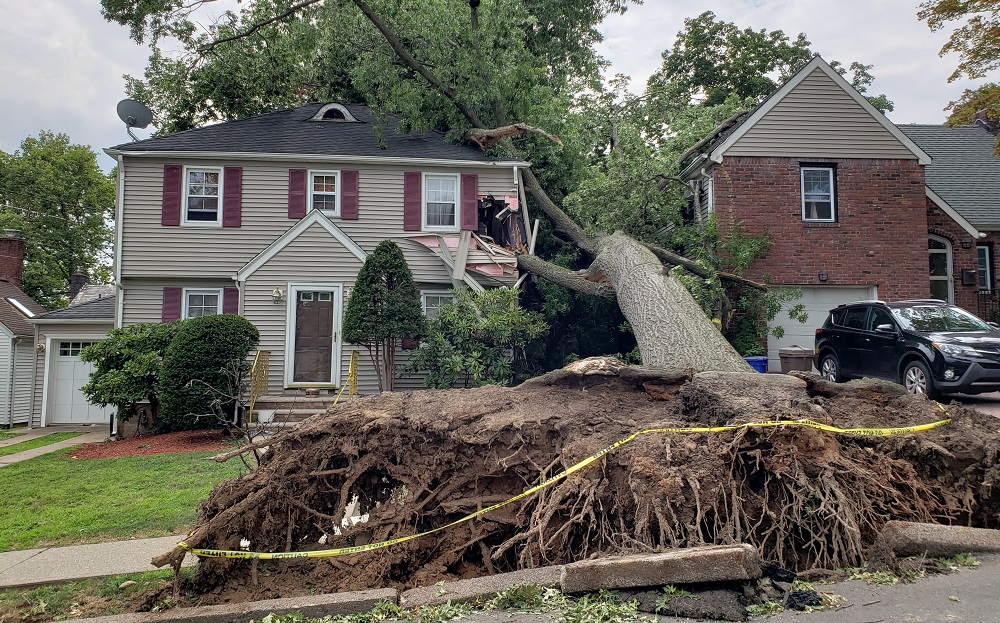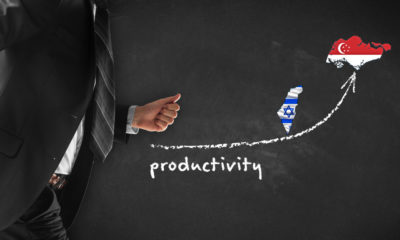We Must Stop Blaming Nature For Our Own Failings
Almost eight years ago, in the aftermath of Hurricane Sandy, Forbes published the following op-ed that I wrote about storm-inflicted human suffering that could have been easily been avoided if we, as a society, had taken proper precautions.
Sadly, Tropical Storm Isaias and the COVID-19 pandemic have proven that we continue to endanger ourselves by ignoring critical lessons that should be obvious. From our failure to properly maintain trees, to our allowing regulated utility companies not to communicate or to deliver service to any acceptable modern standard, to our failure to adhere to proper emergency management plans created in the wake of prior pandemics, to our failure to properly prepare for a Presidential election to be held during unusual times, to so many other serious errors on our part – we have repeated the mistakes of the past, and shirked our collective responsibility to make obvious and necessary improvements.
It is time that government officials – and the voters who elect them – take action to prevent future problems. Let’s not repeat our mistakes yet again.
The following were my thoughts in 2012… both you and I can probably relate to them right now as if they were written today.
I am writing this on the morning of Sunday, November 4th, 2012, as a temporary refugee from my home in Northern New Jersey. (Note: This article was embargoed until the author and his family returned home.)
Hurricane Sandy was a horrific natural disaster, and my heart goes out to everyone who is suffering from its aftermath. If we want to prevent future deaths, loss, trauma, and pain, however, we must confront a terrible truth: much of the suffering that people are enduring was both man-made and preventable.
For years, scientists have warned that rising sea levels would ultimately pose a severe threat to lower Manhattan, and that major corrective action was needed to prevent flooding. The risks were publicized on television shows, through charts and animations available on the Internet, and in other media. The New York Times even ran an article on this subject earlier this year. No competent emergency management official could deny knowledge of the problem. Yet, little was done to protect the City from a threat that we knew would ultimately materialize. For what were we waiting – for flooding to actually occur?
Likewise, multiple areas of New Jersey flooded after Hurricane Irene. Not far from me people had to be rescued from their homes in boats. While we did not know exactly where and when flooding would recur, it was obvious that unless major corrective action was taken, it was a matter of “when,” not “if.” We also knew that Irene hit us with relatively weak strength – and that the impact from a mightier storm would likely be far more devastating.
In my own town, in which people are now expected to be without power and heat for quite some time during sub-freezing temperatures, power was cut off for nearly every one of our approximately 40,000 residents by falling trees pulling down wires and utility poles.
We had ample warning. Two town residents were killed by a falling tree in 2010. We suffered two prolonged power failures last year after Hurricane Irene and an October snowstorm, and increasingly frequent shorter outages before then. Crewmembers of the cleanup teams who have arrived from other regions have expressed dismay at the size of trees abutting homes and the pruning done to accommodate sidewalks.
We need to stop ignoring the obvious. While our trees and the canopies they create over our streets are beautiful, in their present form they are also a severe threat to life and property; we must prune where possible, and replace where necessary. Safety comes first.
During the storm and its aftermath, communications also broke down. Government phone and email systems failed, and utilities both provided misleading information regarding power restoration and failed to communicate adequately with government officials and the public, leading to the dissemination of contradictory information from authorities. Confusion reigned, tempers flared, and confidence plummeted.
Aggravating matters locally were asinine, archaic, discriminatory, and probably unconstitutional laws and regulations – including one that required that local hardware stores remain closed on the day before the storm hit; in our area, Sunday is a legally mandated “Day of Rest.” Furthermore, no preconceived plan for automatic or quickly-approved suspension in case of a disaster was in place; even after the magnitude of the devastation and suffering from the storm became clear, it took until Saturday to start the formal legal process needed to suspend these ridiculous regulations (by which point many stores, the majority of which were already crippled, could no longer accommodate opening within a day). The manual process and delayed reaction also meant that any gubernatorial approval of the suspension, as required by law before stores could open, could not come until sometime during the day on Sunday, thereby wasting people’s precious daylight hours.
Sadly, the great City of New York did not perform much better.
One of the cardinal rules of disaster recovery planning is that a plan must be established and tested prior to a disaster, so that people can prepare accordingly, and so that when disaster strikes, everyone follows an explicit script, has clear expectations, knows who needs to do what, when, where, and how, and proceeds in an orderly fashion.
Two days after losing power, my wife took my three young daughters – already traumatized by the storm and by having to abandon their home with no knowledge of when they could return – to relatives in New York City who had power and heat. While my original plan had been to join them shortly thereafter, New York City Mayor Bloomberg suddenly announced that vehicles with under three passengers would not be allowed to enter the City. No script, no pre-storm plan or communications, and no forewarning. While in theory I should still have been able to enter the City via the George Washington Bridge – the one entrance point on which the restrictions had not been placed – a breakdown in government communications (a telltale sign of inadequate planning) caused armed officers to block the roadways from the bridge to Manhattan making entering the City for anyone trying to reunite with his or her family impossible. Would it have been too much for the City to have considered before the storm about how it would handle bridges and tunnels in case of flooding, and to have communicated the possibilities as to what could occur to the public so that they could prepare accordingly?
Speaking of tunnels – why was no plan ever prepared to protect the now incapacitated and damaged Battery Tunnel from Manhattan to Brooklyn from flooding? After Hurricane Irene, and after scientific predictions that even more massive flooding could inundate the area in which the tunnel is located, couldn’t efforts to create closable doors, or a giant plug, or some other solution, have been established and fast-tracked to prevent problems?
Clearly, no disaster recovery plan was in place either to address the marathon scheduled for today. Would any plan really have suggested that runners traverse areas of devastation and that generators be used to power the event instead of for providing heat to freezing victims? And would a plan call for flip-flopping regarding an event’s cancellation? Or wasting the generators once the event was cancelled? These mistakes, which caused additional human suffering, including people traveling from around the country to New York unnecessarily, could have all been avoided with proper planning.
Plans also seemed to fail (or to not exist altogether) in Atlantic City, New Jersey – whose mayor, it seems, was offering to shelter residents in place while the Governor of New Jersey was ordering everyone to evacuate the area. Proper planning, incorporating clear delineation of roles and a chain of command, prevents contradictory or otherwise confusing instructions from being issued by government officials.
We have seen multi-hour long lines for rationed gasoline – so long that cars waiting in line are burning a quantity equal to a significant percentage of the gasoline that their drivers ultimately buy when they reach the front. We must ask ourselves: Was it truly impossible to foresee that without remedial action there would be shortages of gasoline if our ports closed, and gas stations had no electricity to run their pumps – at the same time that tens of thousands of people would be relying on gasoline-powered generators to heat their homes with the outside nighttime temperature dipping into the 20s? Any half-decent disaster recovery plan would have addressed this concern with both preventative measures and a set of orderly procedures to be activated should reactive measures be necessary. Instead, we have authorities shooting from the hip – with no script prepared and shared with the public in advance – sending armed law-enforcement officers to guard gas stations, and enforcing rationing of gasoline with what feels like an ever-changing set of rules. Stations near my home first limited people to $20 of gas at a time, then added restrictions by allowing people to buy $20 of gas only on odd or even dates of the month based on buyers’ license plate numbers, then changed to allow purchases of $40 of gas, but keeping the date rules in place. People were clearly unprepared for these restrictions – especially since nothing about potential limitations were communicated prior to the storm, and, after the storm, communications have been severely compromised. Naturally, corruption and crime ensued: Gas station attendants are being bribed to pump more gas than allowed, parked cars are having their tank locks broken and their gas stolen, and gas tanks are being stolen from people running generators.
On what would have been Halloween eve (October 31st) I saw trick-or-treaters crossing streets with downed wires. New Jersey Governor Chris Christie had postponed Halloween due the dangers of the storm’s aftermath, but this particular group never received word. Nothing on the matter was announced before the storm, and there was no publicly-known specific contingency plan for communications.
No contingency plans for voting in our Presidential Election seem to have been in place either; it seems that we are being presented with announcements of changes to the process and procedures daily. Last evening, New Jersey voters were told that ballots will be able to be submitted by email – a process that is untested, seriously susceptible to fraud, and may even lead to our votes being contested in court. Why wasn’t a plan in place – and communicated to voters – before the storm?
Not all eventualities can be anticipated in advance. But, just as with military strategy, that uncertainly does not reduce the need for proper planning and communication prior to a disaster. One can only imagine what would have happened, for example, if the raid on the Bin Laden compound had been executed with a similar lack of planning and communication, and with a “we’ll figure it out when we get there” strategy like the one currently being employed for many matters in New York and New Jersey.
Many people are still suffering from nature’s wrath, and we must help them in every way possible. We must also be extremely grateful to those who have stepped up and performed as true leaders during this crisis. Let us, however, stop blaming God or nature for those pains that were preventable, and which we, collectively, must admit were self-inflicted through our own human failings. Better planning would have prevented much suffering, and freed up additional resources to help our neighbors whose suffering from nature’s fury could not have been avoided. We should learn from our mistakes. It is an unfortunate certainty that eventually another natural disaster will strike our region – the only unknown is how far in the future that day will be. As soon as the cleanup from the current disaster is complete, let us get to work, and put together proper prevention, contingency, continuity, and recovery plans, so that we or our children, or perhaps their children or grandchildren, don’t have to suffer unnecessarily.













 CyberSecurity for Dummies is now available at special discounted pricing on Amazon.
Give the gift of cybersecurity to a loved one.
CyberSecurity for Dummies is now available at special discounted pricing on Amazon.
Give the gift of cybersecurity to a loved one.